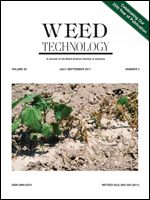Growth of vegetation in curbside cracks causes deterioration of asphalt and curbs, reducing road longevity and safety capabilities. Road managers spend a considerable amount of time and money on roadside vegetation management every year. The vegetation in curbside cracks in these study regions is managed approximately once a year by mowing and road sweeping using street-sweeper trucks. Nevertheless, ideal management practices of roadside vegetation have not yet been established partly due to insufficient knowledge of the ecological strategies of plants invading roadsides, especially curbside cracks. Although establishment of plants in the cracks might be restricted due to severe anthropogenic road disturbances, the cracks could be habitats for species with specific ecological traits. The objective of this study was to clarify the floristic and functional characteristics of roadside weeds, particularly species invading curbside cracks, to provide information for effective road management. The species composition of plants invading the cracks was surveyed along Route 3 (southern Japan) and Route 4 (eastern Japan) in different climatic zones, based on 108 floristic inventories. We compared species occurrence and composition to characterize the dominant ecomorphological traits of the species. In total, 163 species occurred in curbside cracks along both routes. Species composition of vegetation in curbside cracks was more variable between the routes than between land-use types. Of the 54 species, more than 5% occurred in all plots, and only three had differences in occurrence among land-use types. Ecomorphological trait composition patterns of the species were similar across land-use types. From these results, we found that regardless of differences in species composition among regions, climatic conditions, and surrounding land-use type, there were some dominant ecomorphological traits of roadside vegetation with plants in curbside cracks, such as ephemeral monophytes that are barochorous or anemochorous. By contrast, rhizomatous perennials, which cause greater deterioration of asphalt than ephemeral monophytes, were rare along the cracks. Although vegetation composition and structure generally depend on land-use types and disturbance regimes, linear landscape elements such as curbsides might be habitats for plants adapted to road disturbances. Roadside vegetation management, such as mowing and road sweeping once a year, seems sufficient to restrict establishment of rhizomatous perennials around Japan.
How to translate text using browser tools
1 July 2011
Classification of Roadside Weeds along Two Highways in Different Climatic Zones According to Ecomorphological Traits
Daisuke Hayasaka,
Munemitsu Akasaka,
Daisaku Miyauchi,
Taizo Uchida
ACCESS THE FULL ARTICLE

Weed Technology
Vol. 25 • No. 3
July 2011
Vol. 25 • No. 3
July 2011
Arable land weeds
curbside
land-use type
life history
nonindigenous species
road ecology
road management




